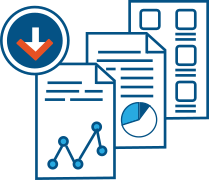GSA Competitive Analysis refers to the process of evaluating market dynamics, pricing trends, contract performance, and vendor positioning within the General Services Administration’s acquisition ecosystem. It is used by both federal buyers and contractors to better understand the competitive landscape of the GSA Multiple Award Schedule (MAS) program and other GSA-managed contract vehicles.
For agencies, competitive analysis informs acquisition strategies by helping identify qualified vendors, fair pricing, and optimal contract vehicles. For contractors, it provides critical insights into pricing benchmarks, competitor offerings, and potential gaps or opportunities in the market. In both cases, GSA competitive analysis is essential for achieving best value, maintaining regulatory compliance, and supporting data-informed procurement decisions.
Purpose and Importance
The federal procurement environment is large, complex, and constantly evolving. GSA competitive analysis is a strategic tool that helps stakeholders cut through that complexity by examining how suppliers, pricing, and demand align within a given product or service category. It is particularly valuable in the context of GSA Schedules, where contractors offer commercial products and services at negotiated, pre-approved prices.
For acquisition professionals, conducting a competitive analysis supports compliance with the Federal Acquisition Regulation (FAR), including requirements for price reasonableness and market research. For vendors, competitive analysis is vital for proposal development, contract pricing, and growth planning.
This type of analysis typically combines internal procurement data, such as GSA Advantage! catalog listings and contract award data, with external market intelligence and procurement forecasts. When conducted effectively, it allows agencies to streamline procurement and contractors to position themselves more competitively.
Key Components of GSA Competitive Analysis
A thorough GSA competitive analysis typically includes several dimensions of market evaluation, which together create a comprehensive picture of the competitive environment.
The core components of a GSA-focused competitive analysis include:
- Price benchmarking — Comparing your company’s proposed prices to existing awarded prices for similar items or services under GSA MAS
- Vendor landscape review — Identifying how many vendors offer the same or similar products/services and evaluating their market share
- Contract vehicle utilization — Determining which vendors are winning most of the orders, and under which Special Item Numbers (SINs) or contract types
- Performance trends — Reviewing contractor past performance data, ratings, and customer reviews from sources such as CPARS or GSA eLibrary
- Differentiation analysis — Identifying what value-added features or capabilities set your offerings apart from competitors in terms of price, quality, or delivery
These elements help both buyers and sellers determine how competitive a particular offer or strategy is relative to others in the market.
Tools and Data Sources
GSA and its partner agencies provide multiple resources that support competitive analysis. These tools help users access structured procurement data, track spending trends, and analyze vendor performance.
Common tools and sources used in GSA competitive analysis include:
- GSA eLibrary — Used to research contractors, awarded SINs, and contract terms
- GSA Advantage! — A searchable catalog of products and services offered through MAS, useful for price comparisons and item availability
- CALC (Contract-Awarded Labor Category tool) — Allows users to compare labor category pricing across awarded GSA contracts
- FPDS (Federal Procurement Data System) — Tracks contract awards, spending, and agency procurement trends
- SAM.gov — Offers access to solicitation histories and award notices
- Acquisition Gateway — A GSA-managed platform providing market research templates, pricing tools, and category-level intelligence
Contractors may also use commercial procurement intelligence platforms or third-party pricing databases to supplement GSA’s tools.
How Contractors Use Competitive Analysis
For GSA Schedule contractors, competitive analysis is crucial at several stages: before entering the MAS program, when preparing a proposal or modification, and when developing a strategy to win task orders. Understanding where you stand in relation to similar vendors allows you to make informed decisions about pricing, positioning, and service offerings.
Contractors typically use competitive analysis to:
- Validate their proposed pricing against market benchmarks to ensure it is competitive but profitable
- Identify high-demand SINs or subcategories where competition is lower or where existing vendors are underperforming
- Adjust their GSA Advantage! listings based on how competitors present their products, images, and keywords
- Target specific agencies or regions where competitors have limited presence or where procurement forecasts show opportunity growth
Regularly updating competitive analysis also helps contractors adapt to shifts in demand, policy changes, or pricing pressure from new entrants.
Conclusion
GSA Competitive Analysis is a vital part of modern federal acquisition strategy. Whether used by government buyers to make informed sourcing decisions or by contractors seeking to improve their market position, this analytical process enables smarter, more strategic participation in the GSA Schedule program. Through price benchmarking, vendor evaluation, and use of available market data, competitive analysis supports transparency, compliance, and value in federal procurement. Contractors who invest in ongoing competitive analysis are better equipped to align their offerings with agency needs and win more consistently in a highly competitive market.


